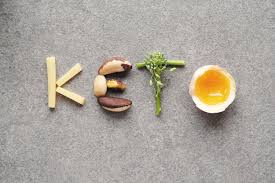Source:
A ketogenic (keto) diet is high in fat and protein and low in carbohydrates. Most of the body’s cells prefer to use blood sugar (glucose) as their main source of energy. The keto diet forces your body to use a different type of fuel. Instead of providing your body with glucose from carbohydrates, the keto diet relies on the liver to break down stored fat into molecules called ketones. (This process is called ketogenesis; that’s where the diet’s name comes from.)
For most people to begin using stored fat as fuel, they need to limit daily carbohydrate intake to fewer than 20 to 50 grams depending on body size. (For comparison, a medium-sized banana has about 27 grams of carbs.) But this is a highly individualized process, and some people need a more restricted diet to begin producing enough ketones. It typically takes two to four days to reach a state of ketosis (when fat becomes a main source of energy).
There’s no shortage of keto-inspired diets. The Atkins, South Beach, and Paleo diets are some of the best-known examples. But a true ketogenic diet is different and calls for up to 90% of your daily calories to come from fat. That is often hard for people to maintain. However, research has shown that people can achieve faster weight loss with a keto diet compared with a calorie-reduction diet. In the short term, a keto diet is probably safe. But over time, it’s tough to keep off the weight this way.
If you do try a keto diet to jump-start weight reduction, choose healthier sources of fat and protein, such as olive oil, avocados, and nuts (almonds, walnuts). But after a few weeks, switch to a reduced-calorie Mediterranean-style diet and increase your physical activity. This will help manage your weight loss for the long term.
